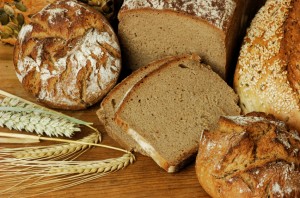
Image used with permission from Microsoft
Food staples, such as wheat, rice, and beans can be purchased in bulk for a very reasonable price and can be rotated into your food storage at home.
If you buy wheat, be sure you have a way to grind it into flour. If you buy flour, put it in the freezer for 48 hours to kill weevil eggs. Then it should stay fresh in your pantry for 7-8 months. Freezing also kills eggs in other dry grains and beans.
Research shows that these common longer-term food storage items remain nutritious and edible for a very long time if they are properly packaged and stored at or below room temperature. Here is the estimated shelf life for common staples:
- Wheat: 30+ years
- White Rice: 30+ years
- Corn: 30+ years
- Pinto Beans: 30 years
- Dried Apple Slices: 30 years
- Macaroni: 30 years
- Rolled Oats: 30 years
- Potato Flakes: 30 years
- Powdered Milk: 20 years
Some communities have home storage centers that can help you package food products for longer-term home storage. For example, you can buy large quantities of beans, wheat, and rice and then package them in #10 cans or foil pouches. Some centers even have portable can seamers and pouch sealers that you can check out if you wish to package food at home. The Church of Jesus Christ of Latter-day Saints (the “Mormons”) are famous for their home storage centers that they make available to the community, whether you are a member of their church or not. Check with one of their local congregations or look online to see if there is a center near you.
Storing food commodities is not only a smart economic idea, but also wise to be prepared in case of an emergency. Don’t forget to store drinking water in case your local water supply becomes polluted or disrupted. In addition to needing water to drink, you’ll need water to prepare all the food you have stored.
If your local water is from a good, pretreated source, then no additional purification is needed to store it. Otherwise, pretreat the water before you store it. Store water in sturdy, leak-proof, breakage-resistant containers. Consider using plastic bottles commonly used for juice and soda that you have emptied and rinsed. Don’t use plastic milk jugs, as they cannot be cleaned sufficiently to store water safely. Keep water containers away from heat sources and direct sunlight.



